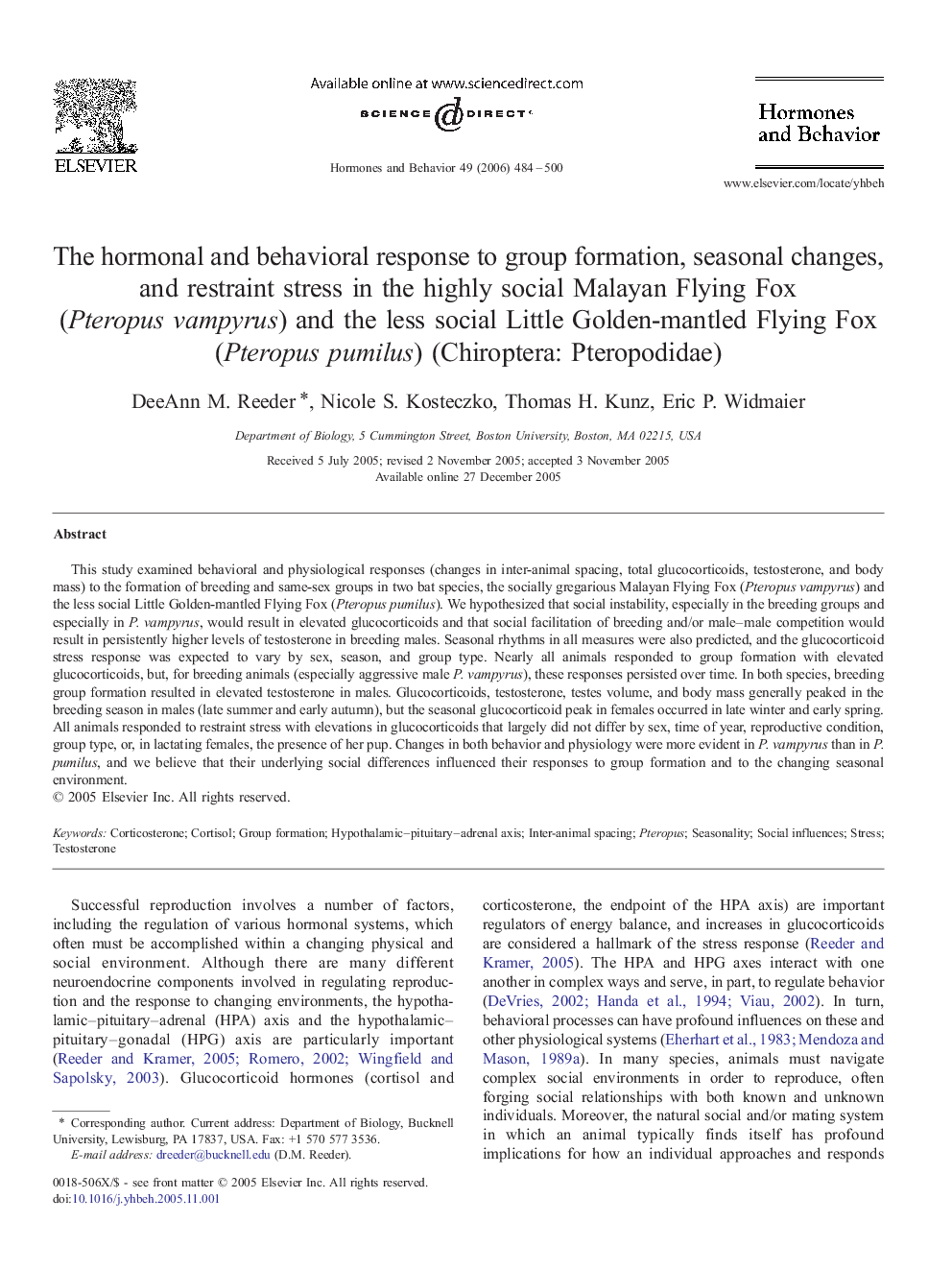| کد مقاله | کد نشریه | سال انتشار | مقاله انگلیسی | نسخه تمام متن |
|---|---|---|---|---|
| 323944 | 540826 | 2006 | 17 صفحه PDF | دانلود رایگان |

This study examined behavioral and physiological responses (changes in inter-animal spacing, total glucocorticoids, testosterone, and body mass) to the formation of breeding and same-sex groups in two bat species, the socially gregarious Malayan Flying Fox (Pteropus vampyrus) and the less social Little Golden-mantled Flying Fox (Pteropus pumilus). We hypothesized that social instability, especially in the breeding groups and especially in P. vampyrus, would result in elevated glucocorticoids and that social facilitation of breeding and/or male–male competition would result in persistently higher levels of testosterone in breeding males. Seasonal rhythms in all measures were also predicted, and the glucocorticoid stress response was expected to vary by sex, season, and group type. Nearly all animals responded to group formation with elevated glucocorticoids, but, for breeding animals (especially aggressive male P. vampyrus), these responses persisted over time. In both species, breeding group formation resulted in elevated testosterone in males. Glucocorticoids, testosterone, testes volume, and body mass generally peaked in the breeding season in males (late summer and early autumn), but the seasonal glucocorticoid peak in females occurred in late winter and early spring. All animals responded to restraint stress with elevations in glucocorticoids that largely did not differ by sex, time of year, reproductive condition, group type, or, in lactating females, the presence of her pup. Changes in both behavior and physiology were more evident in P. vampyrus than in P. pumilus, and we believe that their underlying social differences influenced their responses to group formation and to the changing seasonal environment.
Journal: Hormones and Behavior - Volume 49, Issue 4, April 2006, Pages 484–500